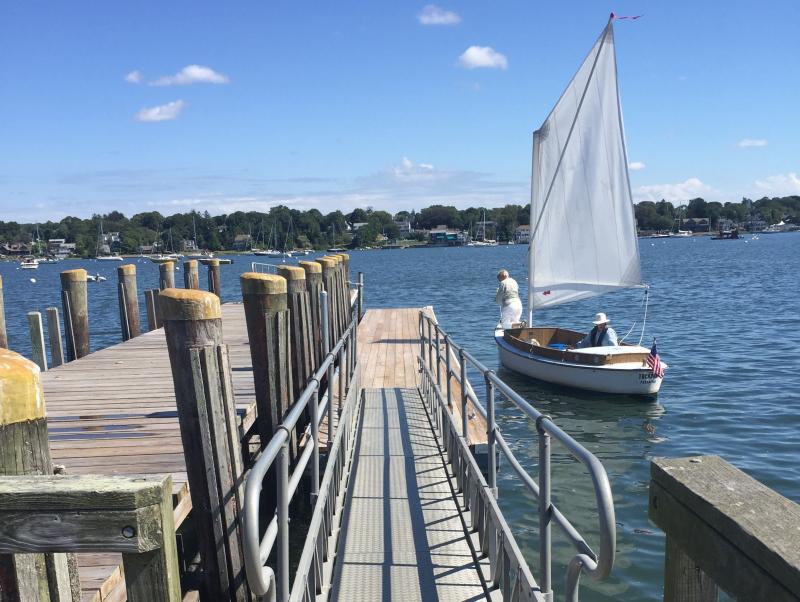What is a gangway?
The Select Board voted on the latest maritime center plan on Tuesday, September 6, but for those of us who aren't coastal natives—and maybe even for those of us who are—Dartmouth Week worked with Dartmouth Harbormaster Steve Melo to compile a list of must-know terminology to make sense of the dinghies, docks, piers, etc.
Deck
A deck is for observation purposes, explained Melo. "There's no boat usage," he said. You can equate this to a walkway or lookout, which are both intended to enhance viewing. You might hear the term esplanade; an esplanade is built to serve as a recreational walkway.
Dinghies

A dinghy is a small boat used to get from land to a boat tied up at a mooring.
Dock
A dock is a general term to encompass the whole structure connecting land and water access, said Melo. For example, this could include a float, a gangway, and a pier, or it could be just a pier.
Dock can also be used as a verb. In this usage, it means to tie up a boat to a dock.
Float

A float is not fixed to the bottom of the ocean. It rises and falls with the tide. In the picture above, the float is secured to poles on its side to keep it from drifting away, but it is not cemented to the floor, which separates it from a pier.
Gangway

A gangway is usually aluminum—although if you've been to the Water-Bridge streets landing, you will know that they also can be made of wood. It is a ramp that connects the pier to the float, said Melo.
Pier

A pier is a structure that goes into the water. It's usually made of wood, but what separates it from a float is that it has a fixed height, said Melo. Piers do not move. Use it to access a boat.
Wharf
A wharf is equivalent to a pier in that it helps access boats, however, the difference is that there is no water underneath it. "It is made out of earth," said Melo. Think naturally formations that jut out into the sea. They can be manmade too, though, in which case you would see rock or sand fill underneath the structure.












